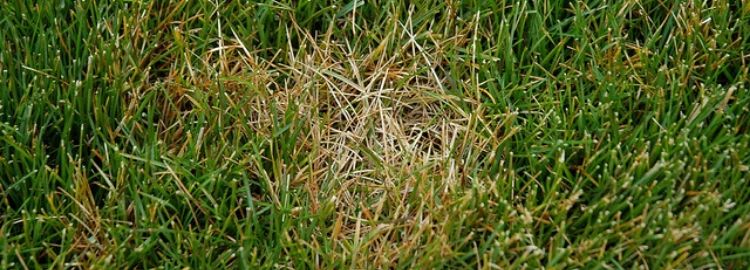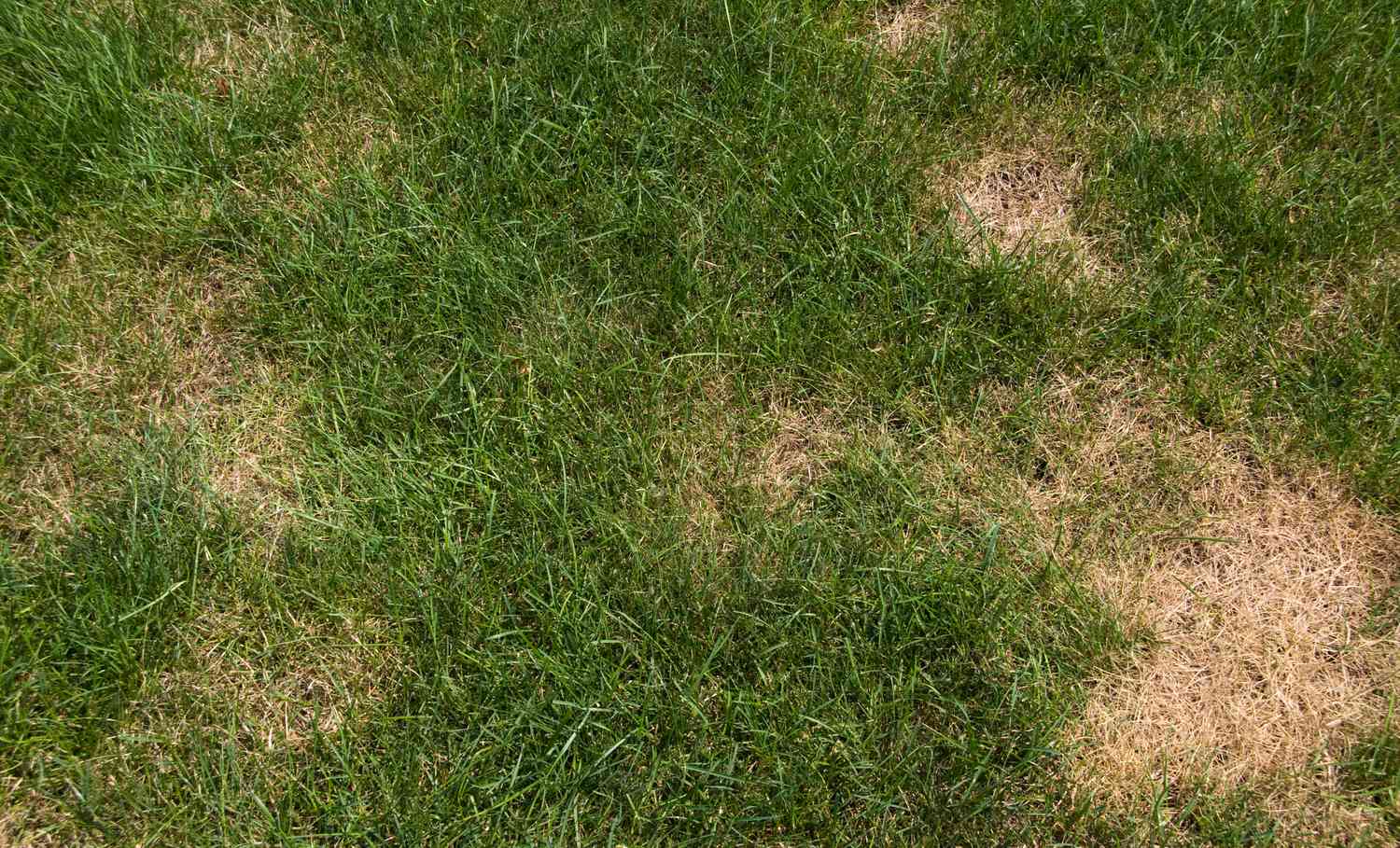To identify lawn problems, examine the appearance of your grass, check for pests or diseases, test the soil, and investigate watering and maintenance techniques. A healthy lawn enhances the beauty of your outdoor space, but various issues can affect its health.
Identifying lawn problems is essential to take corrective measures and restore its green and lush appearance. By closely observing the condition of your grass, observing any pests or diseases, testing the soil, and evaluating your watering and maintenance methods, you can pinpoint the underlying issues and take appropriate action.
This article will provide you with a comprehensive guide on how to identify lawn problems and ensure the vitality of your turf.

Credit: www.milorganite.com
The Importance Of Identifying Lawn Problems
Why identifying lawn problems is crucial for maintaining a healthy lawn.
Understanding the impact of neglected lawn issues can help you improve the health and appearance of your lawn. Identifying and addressing lawn problems promptly is essential for its long-term well-being. If left unnoticed, these problems can worsen and lead to significant damage.
Regularly inspecting your lawn and being aware of common lawn problems such as weeds, pests, and diseases is key. By identifying these issues early on, you can take appropriate action to mitigate their effects. Timely intervention can prevent the spread of diseases, minimize the spread of weeds, and control pest infestations.
Moreover, understanding the underlying causes of these problems can help you prevent them from occurring in the first place. Factors such as inadequate watering, poor soil quality, improper mowing techniques, and lack of nutrients can contribute to lawn problems. By identifying these root causes, you can implement preventive measures to maintain a healthy lawn.
Common Signs Of Lawn Problems
Identifying lawn problems can help you maintain a healthy and beautiful outdoor space. Brown patches and discoloration are common signs of lawn problems. These areas may indicate issues like drought, overwatering, or nutrient deficiencies. Weeds and invasive plants can also take over your lawn, competing with the grass for nutrients and water. If you notice an abundance of weeds, it may be a sign of underlying issues.
Pest and insect damage is another problem that can affect your lawn’s health. Insects like grubs and chinch bugs can cause visible damage, leading to thinning or bare spots. Irregular growth patterns, such as patches growing at different rates, may be a result of uneven watering or soil compaction.
| Signs | Possible Causes |
|---|---|
| Brown patches and discoloration | Drought, overwatering, nutrient deficiencies |
| Weeds and invasive plants | Competition for nutrients and water |
| Pest and insect damage | Grubs, chinch bugs, visible damage, thinning or bare spots |
| Bare spots and thinning grass | Underlying issues, improper care, disease |
| Irregular growth patterns | Uneven watering, soil compaction |
How to Identify Lawn Problems: Step by Step Guide
Analyzing Brown Patches And Discoloration
Brown patches and discoloration on your lawn can be a cause for concern. These issues can be attributed to various factors, and it’s important to analyze them closely to identify the underlying problem.
One factor that can contribute to brown patches is fungal diseases. These diseases are often characterized by circular or irregular-shaped patches with distinct borders. They can be caused by excessive moisture and poor air circulation. On the other hand, brown patches caused by drought stress may appear as large, irregular-shaped areas of discoloration.
Another factor to consider is nutrient deficiencies and overfertilization. A lack of essential nutrients like nitrogen, phosphorus, or potassium can result in brown patches on the lawn. Conversely, overfertilization can cause burning and discoloration.
By closely examining the characteristics of the brown patches and considering these factors, you can successfully identify the underlying problem and take appropriate measures to restore the health and beauty of your lawn.
Dealing With Weeds And Invasive Plants
Dealing with **weeds and invasive plants** is essential for maintaining a healthy lawn. Recognizing common lawn **weeds** is the first step in combating them. Some common types of weeds include dandelions, crabgrass, and clover. These weeds can quickly overtake your lawn if left uncontrolled. **Invasive species** also pose a threat to the health of your lawn. These plants can take over and compete with native grasses, causing a decline in overall lawn quality. It is important to understand the impact of these invasive plants in order to effectively address the issue.
There are several **effective methods** for **weed control and prevention**. Regularly mowing your lawn and maintaining a proper height can help prevent weed growth. Additionally, applying pre-emergent herbicides can stop weeds from germinating. Post-emergent herbicides can be used to target existing weeds. **Manual removal** of weeds is another option, especially for small infestations. However, it is important to ensure the entire weed and its root system are removed to prevent regrowth. Lastly, maintaining a healthy lawn through proper watering, fertilization, and overseeding can help prevent the establishment of weeds and invasive plants.
Recognizing Pest And Insect Damage
Recognizing pest and insect damage in your lawn is crucial for maintaining a healthy and vibrant landscape. Signs of pest infestation in the lawn can manifest in various ways. Look out for visible damage such as chewed or discolored leaves, wilting plants, and unusual holes in the turf. Common lawn insects and their damage include armyworms, grubs, and chinch bugs. Armyworms feed on grass blades, causing brown patches and skeletonized foliage. Grubs eat grassroots, leading to yellowing and wilting of the lawn. Chinch bugs pierce plant tissues, causing yellow or brown patches.
To control and prevent pest infestations, you can choose between organic and chemical solutions. Organic methods involve using natural insecticides derived from plant oils or biological controls that target specific pests. Chemical solutions, on the other hand, utilize synthetic insecticides to eliminate pests. Consider your preferences and the severity of the infestation when deciding which option to pursue. Remember to follow the recommended application instructions for the chosen solution to ensure effective pest control without harming your lawn.
Addressing Bare Spots And Thinning Grass
Bare spots and thinning grass in your lawn can be a cause for concern, but understanding the reasons behind them can help you address and resolve these issues effectively. One common cause is soil compaction, which restricts the movement of air, water, and nutrients to the grass roots, leading to poor growth. Another issue to consider is poor drainage, which can result in excess water accumulation, drowning the grass roots and causing them to die off.
To rejuvenate your lawn, **overseeding** and **reseeding** are effective techniques. Overseeding involves spreading grass seed over the existing lawn to fill in bare spots and encourage new growth. Reseeding, on the other hand, involves completely renovating the lawn by removing the existing grass and starting fresh with new seed. Both methods can help restore a lush and healthy lawn.
Understanding Irregular Growth Patterns
Understanding irregular growth patterns in your lawn is crucial for maintaining a healthy and vibrant yard. One of the common causes of patchy and uneven growth is improper mowing and watering practices. Mowing mistakes such as cutting the grass too short or using dull blades can weaken the grass and lead to an uneven appearance. Watering mistakes such as overwatering or underwatering can also contribute to irregular growth.
Identifying these problems requires careful observation of your lawn. Look for areas that consistently have shorter or longer grass, as well as areas that appear brown or lack density. This can be indicative of specific issues like over or underwatering, compacted soil, or the presence of pests and diseases.
To address these problems and achieve uniform growth, it’s important to implement proper lawn care practices. This includes mowing at the correct height for your grass type, ensuring your mower blades are sharp, and following a regular watering schedule that provides adequate moisture without causing waterlogging.
By taking the time to understand and address irregular growth patterns, you can keep your lawn looking its best and enjoy a lush and healthy outdoor space.
Additional Resources For Lawn Problem Identification And Solutions
When it comes to identifying and resolving lawn problems, there are several additional resources available to help homeowners. Online tools can be a valuable asset, providing a quick and easy way to diagnose issues with your lawn. These tools use a combination of visual cues and symptom information to guide you towards the most likely problem and recommend treatment options.
If you’re looking for professional assistance, consider consulting with a lawn care service. They have the expertise and experience to accurately diagnose and address any issues your lawn may be facing. Hiring professionals can save you time, effort, and ensure the best possible outcome for your lawn.
In addition to online tools and professional help, there are also recommended books and articles on lawn care that can provide further guidance. These resources cover a wide range of topics, from general lawn maintenance to specialized troubleshooting. By expanding your knowledge base, you can become better equipped to tackle any lawn problems that arise.
Frequently Asked Questions Of How To Identify Lawn Problems
What Are Common Lawn Diseases?
Common lawn diseases include brown patch, dollar spot, and snow mold. These diseases can cause damage to the grass, leading to thinning or dead patches. Proper lawn care practices, such as regular mowing and watering, can help prevent these diseases.
How Do I Know What’S Wrong With My Grass?
To determine what’s wrong with your grass, start by examining its appearance. Look for discoloration, patchiness, pests, or signs of disease. Consider factors like overwatering, poor drainage, inadequate sunlight, soil quality, and improper fertilization. If unsure, consult a lawn care professional for a proper diagnosis.
Is There An App To Identify Lawn Problems?
Yes, there are apps available that can help identify lawn problems. These apps utilize image recognition technology to analyze photos of your lawn and provide information on common issues like pests, diseases, and nutrient deficiencies. They can be a convenient tool for homeowners and gardeners to diagnose and address lawn problems effectively.
What Does A Sick Lawn Look Like?
A sick lawn may appear yellow, patchy, and thin. It might have weeds, dead or dying grass, and bare spots. The soil may be compacted, lacking in nutrients, or have excessive thatch. Correcting these issues can help revive and restore the health of your lawn.
Conclusion
Being able to identify lawn problems is crucial for maintaining a healthy and beautiful yard. By observing the symptoms, examining the soil, and taking appropriate action, you can address issues such as weeds, pests, nutrient deficiencies, or diseases. Regular maintenance and proper care will go a long way in ensuring your lawn remains lush and vibrant throughout the year.
So, take the time to familiarize yourself with common lawn problems and equip yourself with the necessary knowledge to keep your lawn in top shape.

